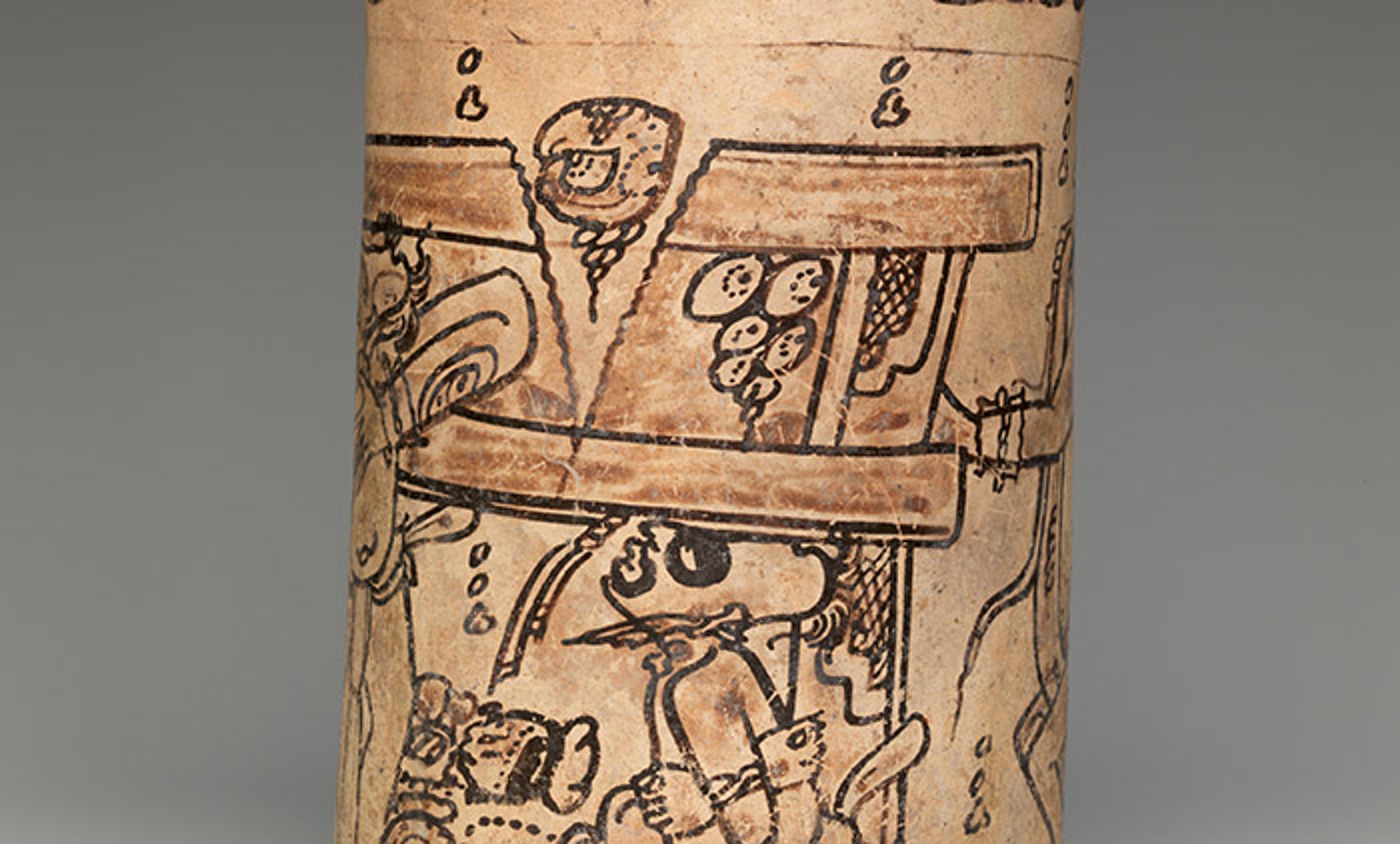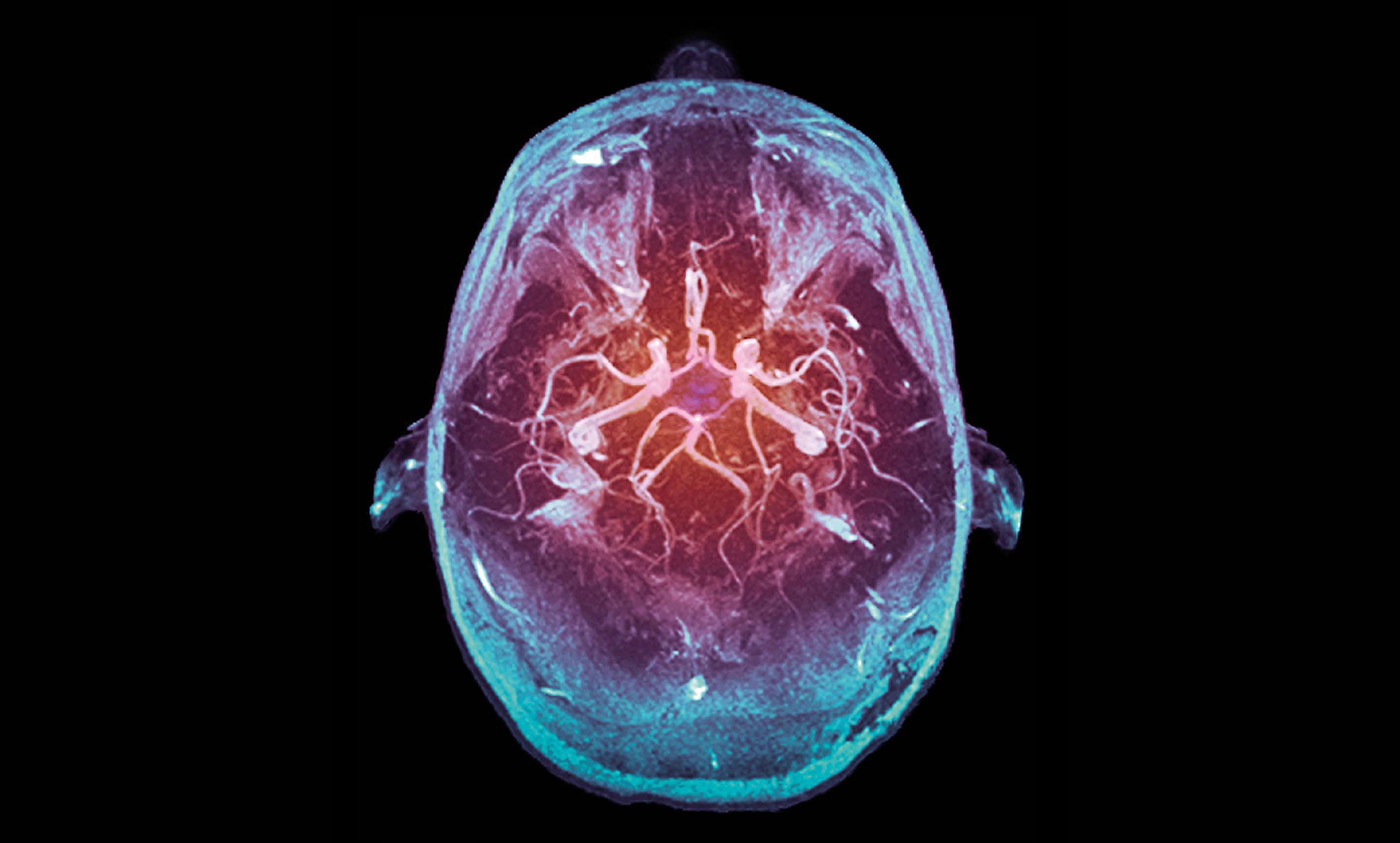Detail from a Mayan Codex-style vase, c7th or 8th century. Courtesy The Met Museum, New York
For the Maya of the Classic period, who lived in southern Mexico and Central America between 250 and 900 CE, the category of ‘persons’ was not coincident with human beings, as it is for us. That is, human beings were persons – but other, nonhuman entities could be persons, too. Scholars of Maya culture have been aware of this inclusive concept of personhood for some time, recognising that persons could include all sorts of entities: some of these look personish – a clay figurine, for example – while some, such as a rock, do not.
While the social category of ‘persons’ is found in multiple cultural contexts, who or what is recognised as a person can differ. But it’s not enough to just acknowledge the possibility or presence of nonhuman personhood. I want to understand how personhood actually operates in these settings. How does personhood work when it includes such a range of entities? How was it to be part of a world inhabited by many types of persons, including nonhumans? Were the Maya just bumping into people right and left?
This is a tricky topic to investigate. We don’t have the luxury of interviewing or observing ancient Maya individuals. But fortunately, the Classic Maya had complex hieroglyphic writing and artistic traditions. These give us insight into ancient Maya understanding of the world, and can be contextualised by critical comparison with colonial-era documentation of Maya beliefs and practices, as well as modern Maya traditional practices. All of these sources indicate that the ancient Maya experienced a world peopled by a variety of types of beings, who figured large in stories, imagery, social and ritual obligations, and community identities.
In order to explore the slippage of categories between ‘humans’ and ‘persons’, I examined a very specific category of ancient Maya images, found painted in scenes on ceramic vessels. I sought out instances in which faces (some combination of eyes, nose, and mouth) are shown on inanimate objects. This is a specific test case – it doesn’t encompass all nonhuman persons for the Maya. Nonetheless, studying these images has let me identify some specifics about how nonhuman personhood ‘worked’ for ancient Maya people.
In Maya understandings, how central are humans to ideas of personhood? Do nonhuman persons need human beings to exist? Put differently, are we as important as we like to think we are? Consider my iPhone, which needs to be fed with electricity every night, swaddled in a protective bumper, and enjoys communicating with other fellow-phone-beings. Does it have personhood (if at all) because it is connected to me, drawing this resource from me as an owner or source? For the Maya (who did have plenty of other communicating objects, if not smartphones), the answer was no. Nonhuman persons were not tethered to specific humans, and they did not derive their personhood from a connection with a human. This is big: when we think about all the different persons in the world (human and nonhuman), their personhood is being drawn from a large, neutral resource pool. It’s a profoundly democratising way of understanding the world. Humans are not more important persons – we are just one of many kinds of persons who inhabit this world.
In a Maya way of thinking, personhood is a resource in the world. How or where does it show up? The Maya saw personhood as ‘activated’ by experiencing certain bodily needs and through participation in certain social activities. For example, among the faced objects that I examined, persons are marked by personal requirements (such as hunger, tiredness, physical closeness), and by community obligations (communication, interaction, ritual observance). In the images I examined, we see, for instance, faced objects being cradled in humans’ arms; we also see them speaking to humans. These core elements of personhood are both turned inward, what the body or self of a person requires, and outward, what a community expects of the persons who are a part of it, underlining the reciprocal nature of community membership.
We must also recognise that personhood is a dynamic state. An entity isn’t always or inherently a person. This is kind of wild – not only do we have to keep our eye out for the various persons who might surround us on a daily basis, but we have to be aware that things might be entering or exiting this state. For me (and perhaps for the Maya), one of the upshots is that we don’t want to imagine a magical world in which all of the things surrounding us are talking, dispensing advice, asking for a cuddle or a snack. Rather, the experience would have been one of potentiality. The Maya probably weren’t bumping into fellow persons willy-nilly, but they were prepared to recognise signs of personhood in a wide variety of places, and to respond appropriately when nonhuman entities signalled as such to them.
There’s one other element to consider, in blurring the boundaries of personhood. Personhood was a nonbinary proposition for the Maya. Entities were able to be persons while also being something else. The faced objects I looked at indicate that they continue to be functional, doing what objects do (a stone implement continues to chop, an incense burner continues to do its smoky work). Furthermore, the Maya visually depicted many objects in ways that indicated the material category to which they belonged – drawings of the stone implement show that a person-tool is still made of stone. One additional complexity: the incense burner (which would have been made of clay, and decorated with spiky appliques representing the sacred ceiba tree found in this region) is categorised as a person – but also as a tree. With these Maya examples, we are challenged to discard the person/nonperson binary that constitutes our basic ontological outlook.
Even if we aren’t about to admit rocks or smartphones into the exclusive club of ‘persons’, this is a timely topic. Challenging ourselves to illuminate assumptions about personhood (and its associated responsibilities and mutual obligations) sheds light on our own roles in constructing and deconstructing people, and the social and political consequences. Environment, race, immigration, civil discourse, gender identity, #MeToo: all of these topics link in some way to whom, or what, we value in comparison with our own experience of being a ‘person’, and our norms of what shared person-status means for action and interaction. The porousness of boundaries that we have seen in the Maya world points towards the possibility of living with a certain uncategorisability of the world.






